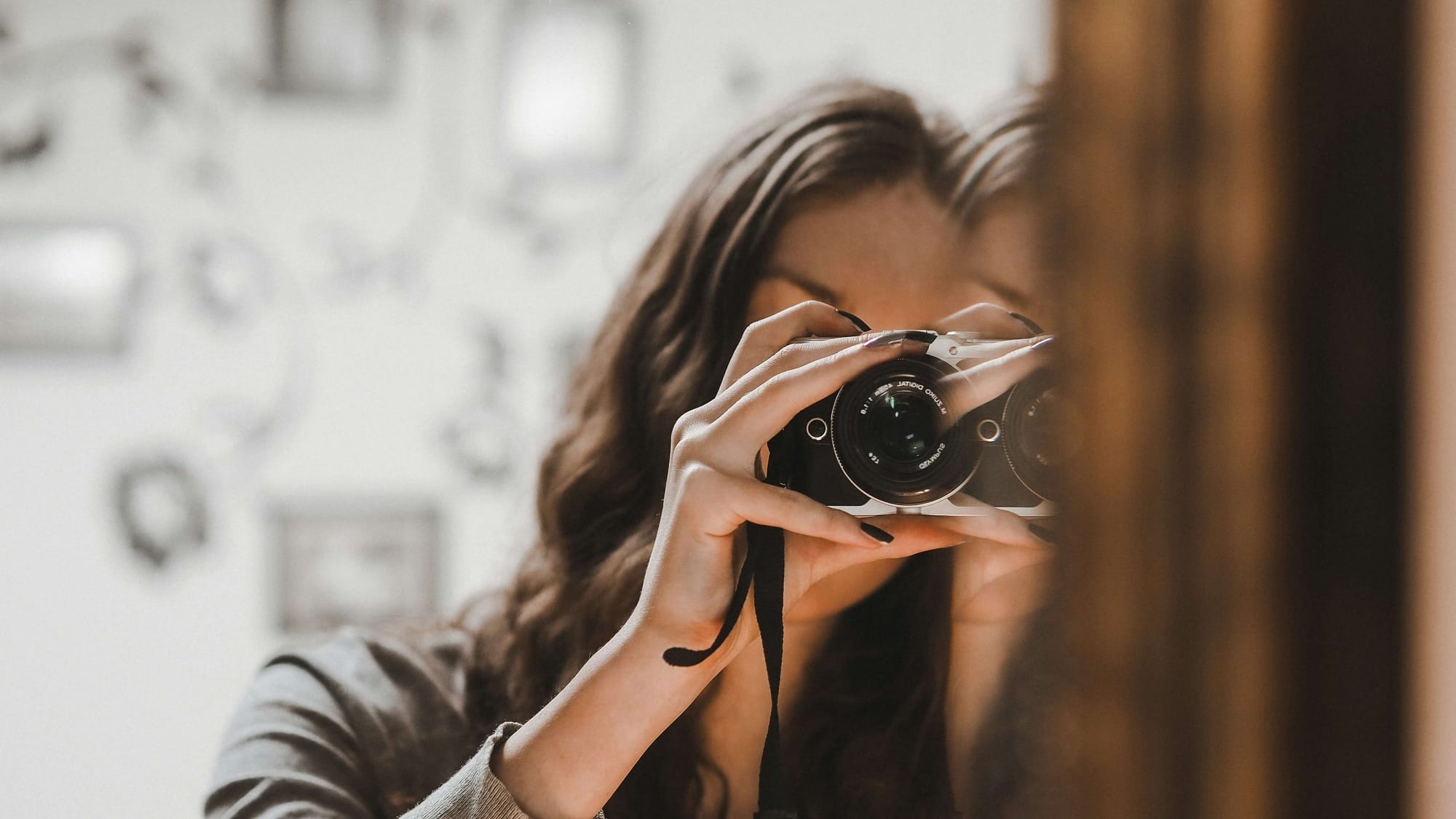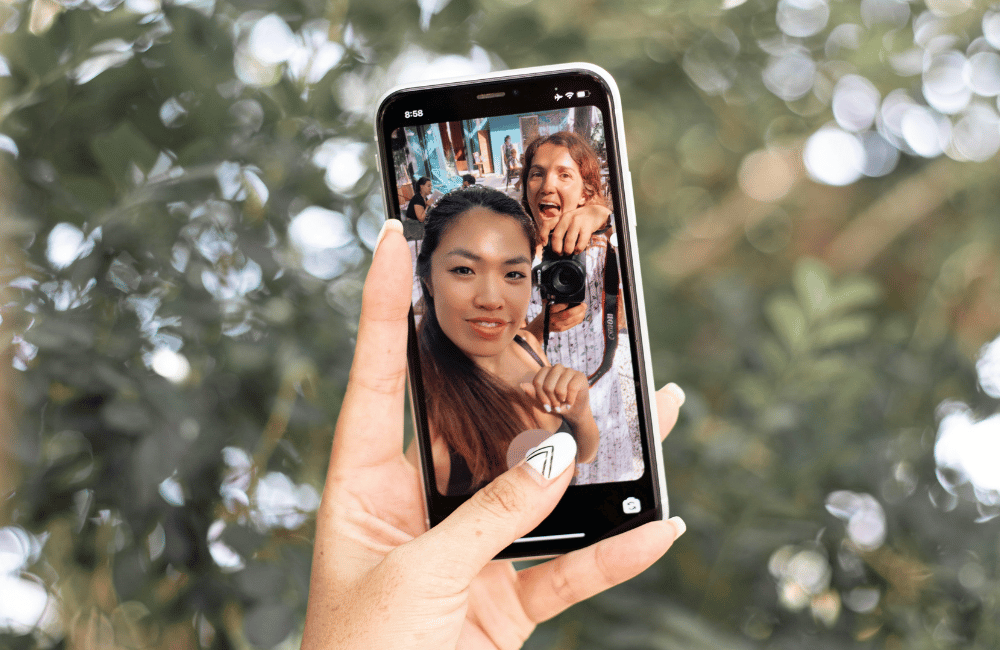
How I Grew My Instagram Following to 20k in Under a Year (+ Monetized It)
Valerie Moore's second run at growing an Instagram following was a roaring success – here's how she did it.
Creator and Product Manager
For years, I struggled to grow my audience on Instagram. After 6 years of trying hard to build my fitness-focused account, I only had 2,300 followers to show for it.
While I do believe follower count is a vanity metric, I couldn’t help feeling frustrated and like a failure. Realizing I needed a change, I revamped my strategy based on my experience to grow a new Instagram account Not Bored in DC to over 20,000 followers in just 9 months while also getting paid to create content.
The secret? I have a crystal clear picture of my target audience, speaking clearly and speaking only to them, treating every piece of content as an experiment, and spending my energy doing things that prioritize long-term income.
In this article, I will walk you through exactly what helped me grow and how you can do the same.
Defining a target audience & monetization strategy
Success on social media requires planning beyond a posting schedule. Focusing on creating content for a well-defined audience is essential. Creating generalized content that may appeal to everyone ultimately appeals to no one.
Deciding which audience you want to target will impact your future monetization. For that reason, I think everyone should have a monetization strategy from the beginning.
When brands are looking for influencers and content creators to work with, they are looking for someone who knows how to speak effectively to a defined audience.
Identify content themes
When deciding to become an influencer, consider the kind of content you want to create, such as fashion, technology, or travel. As I was thinking through the content themes I wanted to discuss, I realized it would mean shifting into new content my existing fitness audience did not care about. I thought it best to start from scratch.
I brainstormed various topics I’d be interested in creating content, organized all of them into broad themes, such as “DC fitness,” “DC lifestyle,” “event highlights,” and “affordable adventures,” and saw that most of them were centered around Washington, DC. I used this to create my user personas.
Create user personas
In my day job as a product manager at MetaCTO, I create user personas to better understand users’ needs and build apps that solve their problems.
A user persona is a fictionalized person who represents a segment of users of a product, like a website, app, or service. It is general enough to represent many people but detailed enough to feel real and elicit empathy.
Based on my content themes, I created user personas for who I thought would be most interested in my content, segmenting them out by broad groups:
The early 20s student who is looking for affordable and unique things to do in DC. The person who has lived in DC for many years and feels like they’ve seen it all. The suburban parent who dislikes crowds. The tourist from out of state. And the recent transplant to DC who’s looking to get to know their new city.
For each of these, I imagined what they would be like and created a representative person. My primary persona is Alex:
This exercise helped me identify the most valuable content for each audience segment. I selected my primary target user persona and secondary personas and excluded those that did not fit.
Recognizing which audiences to ignore is crucial. For example, I decided against making content for tourists because their needs are too different from my primary audience. This doesn’t mean that tourists won’t find my content useful. It just means that I’m not trying to solve their unique problems.
Focus on a niche
To be successful, you need to narrow down the types of content you’ll be making and determine your niche. A niche is a highly targeted and specific audience or topic.
I went through an exercise to clearly state who I am helping and how using the following statement:
I help [type of person] to [outcome] by [method].
For me, I help people living in Washington, DC, to have a more fulfilling life by connecting them to new experiences and information. This means I share things to do, eat, and know in and about Washington, DC.
Understand monetization options
Creating content is time-consuming and requires many skills. To ensure I get compensated for my time and expertise, I planned possible monetization options from the start, even though I didn’t plan to monetize immediately. I didn’t want to struggle to align my audience with potential revenue streams down the road due to not understanding my options.
The most common ways to monetize an audience include:
- Brand deals: Working with a company to create content that promotes their business or product and posting that content to your own account or website. I do this with social posts like Reels and stories as well as including links in my bio, newsletter placements, and blog posts.
- User-generated content (UGC): Creating content that promotes a company’s business or product but without posting to your audience. Typically, this is used by the brand for running ads or is posted on their own feed organically. I considered this as an option initially, but have not found an opportunity that I think aligns with my content style and rates. It’s not an option I am seeking out.
- Affiliate sales: Getting your audience to buy products from a company, and you earn a commission on each sale made through a link or with a unique code. This includes things like TikTok Shops. I am using these on my website and in my newsletter.
- Ads: Posting content made by others on your feed for social media, placing an ad in your newsletter, having YouTube ads on your channel, or joining an ad network like Google AdSense or MediaVine for your website. I do not want to post any in-feed ads, but I am working towards joining one of the large ad networks for my blog.
- Products: Creating physical or digital products you sell directly to your audience. Examples of products include launching an apparel line, creating PDF templates, offering an online course, having a monthly membership or paid newsletter, or selling baked goods. I’ve been selling digital products for several years on my Etsy shop, though I don’t highlight them on my socials. I’m currently working on my first digital products for Not Bored in DC, which I hope to launch this summer.
- Services: Offering your time and expertise to others directly. Common services include coaching, social media management, and custom trip planning. I have tried social media management and was able to get good results, but to do it right, it takes more time than I currently have available. I stopped offering that as a service.
- Events: Hosting or promoting in-person or virtual events. This includes organizing a conference, arranging a happy hour, going live, or appearing at an event at a club. I’ve been hosting free in-person events for the past several months to get a sense of the work involved and the types of events that would be successful.
Each option has pros and cons, and what makes sense may change over time. I suggest brainstorming some ways to take advantage of each monetization option so that you start thinking about it now. That way, as you grow your audience, you have some ideas in your back pocket and can continue to refine them as you grow.
Iterate and improve
Defining user personas sets a good foundation for building a targeted audience, but most content creators spend most of their time making content. Having a strategy to try new things and build upon lessons learned ensures that I stay consistent and focused on my business goals.
A big part of this is staying consistent in who you speak to and how often you post. Consistency doesn’t mean posting three times a day or even every day. I’ve found posting 2-3 times a week is the most I can do based on the effort it takes to create effective content and my time constraints. As long as I have consistently shown up and spoken directly to my target audience, I’ve grown.
Speak to an ideal audience
When I had my fitness account, the biggest problem with my content was that it was only interesting to people who were already interested in my personal life, which became boring even to me.
To increase engagement, I switched my focus to helping beginners feel comfortable going to the gym. The more I focused on the value to my viewers, the more success I had, getting hundreds of thousands of views instead of a few hundred. I learned that I needed to focus my content on my viewers.
With my Not Bored in DC videos, I ask myself who would find this content interesting, what’s the point, and what’s the most interesting part of this. If it isn’t focused on my target audience, it doesn’t get posted, even if I think it’s a great piece of content.
Effective storytelling, whether through words, editing, or framing a scene, is crucial to making the content relatable and interesting to my target audience. I want to make content engaging for people who know nothing about me right from the start and give the bottom line up front.
Experiment with content
I treat all content I publish as an experiment to understand what engages my audience on Instagram. I experiment with style, video length, clip speed, audio, topics, and on-screen text. Utilizing platform features and testing different video openings are also important.
My best learning experience was a 30-day creator sprint on TikTok, during which I posted a new piece of content every single day for a month. The more I posted, the more things I could test and the more practice I got at creating content. The result? A video that reached over 5 million views.
@notboredindc Electricity in homes wasn’t always done through pronged sockets #greenscreenvideo #dchistory #history #oldhousetiktok #1910s #washingtondc
♬ original sound - not bored in DC | valerie
More importantly, though, I refined my skills and learned a lot about audience preferences, showing up authentically, the impact of shareable content, and letting go of perfection.
Analyze and refine
After creating tests, I analyze the findings through Instagram Insights and audience feedback, a great qualitative information source. Recently, I compared the performance of two videos about Washington, DC’s cherry blossoms: a short "vibey" video and a longer explainer video.
I simultaneously polled my audience on which style they preferred. Despite the poll showing a preference for the shorter video, actual engagement metrics like views, likes, and comments were higher for the longer video.
*Actuals and percent of reach shown
What people say they like and what they like are two different things. Always experiment to see if feedback and your assumptions align with real-life actions. Regular testing is needed to see if your audience’s preferences have shifted.
The TikTok Likes graph tells you when viewers liked your video. This has helped me figure out what information and visual elements people really like.
Likes later in the video especially help me identify areas to improve in the future, and periods with no likes indicate areas of improvement. I critically examine each of my videos and think of one thing I could try to improve next time, learning from every post’s performance.
Monetizing your brand
With a targeted and engaged audience and quality content, brands will want to work with you whether you have 1,000 or 100,000 followers. Making money as a creator requires creativity, focus, and resiliency, but there are opportunities everywhere.
But I won’t sugarcoat it: making meaningful money is hard and inconsistent. My goal is a sustainable business, and these are the steps I am taking to achieve it.
Brainstorm effective paths to monetization
As my community grew and I better understood my target audience, I returned to exploring monetization options, identifying which ones best aligned with my audience, content, and platform. Affiliate sales, for example, work well for many fashion and beauty creators on Instagram but not for my content.
Brand deals and ads are popular among creators, who leverage content creation skills and audience insights to promote other companies. However, balance is crucial, as too many ads or collaborations can erode audience trust and interest. For this reason, I limit myself to two a month. Every collaboration reduces my capacity for other content or deals, and it’s important to consider this when considering a paid or gifted collaboration.
Some monetization methods may not work on one platform but will work well on another. At the beginning of the year, I started a newsletter and a blog to monetize more effectively with affiliate links and ads. With the help of my social media presence, I’ve been able to drive traffic to my blog and work to join an ad network to earn more consistent income.
Identifying brands to work with
Finding brands that align with your audience’s interests and content style requires understanding the market. Research some brands that you would want to target your audience to understand:
- The number of potential brands
- The types of creators they have worked with in the past
- Whether they have done any paid partnerships
- How many other creators are targeting a similar audience to you
- If they prefer organic or paid social reach
With a focus on local content, many of my brand partners are local businesses and organizations that want to find local customers, but I also get offers from national brands that want to target Washington, DC.
Building relationships with brands
Ideally, brand partners are brands you like already. I find that interacting with companies organically, like featuring them in a roundup or sharing a story about them, often leads to them sharing my content and starting a conversation.
When discussing partnerships with a brand, I focus on understanding their goals and how I can help them achieve them. This helps them see my value and plan the campaign effectively.
Finding and negotiating with brands is time-consuming. Building long-term relationships with brands can reduce the overhead of securing brand deals. I position myself for long-term partnerships by having a media kit ready, offering discounts for packages, planning how I will measure effectiveness, proactively communicating, and sending a partnership recap. Professionalism often sets a creator apart from others.
I receive daily requests for unpaid collaborations, like meals with local restaurants. These all cost me transportation, equipment, tips, and significant time, taking time away from paid opportunities and the content I prefer to create. I critically evaluate each gifted opportunity and tell most that I am only available for paid opportunities.
There is value in some unpaid collaborations to build a portfolio. I’ve met other great creators at influencer events, and the networking makes it worth it to me. But when my time is better spent strengthening my community than working for free for someone else, I say no.
Focusing on my financial goals helps me see the big picture and continue to grow my brand. My laser focus on my target audience and continuous improvement of my content have helped me grow my Not Bored in DC Instagram account to over 20,000 followers in less than a year. Getting creative about different income streams has also helped me turn it into a business.
Building around my audience
The most critical part of growing my Not Bored in DC account to over 20,000 followers in less than a year has been having a plan and staying consistent. At the core of it is understanding my target audience and their needs and figuring out how my content could improve their lives in some small way.
I needed to build my content around my audience, and defining my content themes and niche has given my content purpose. My audience knows what to expect when one of my videos comes across their feed, and they feel connected to me because I understand their perspective.
Monetization should be considered right from the start. Drawing out possible paths to monetization early on provided me with additional motivation to stay focused on my long-term vision. It also opened me up to trying different options to see what best fits my audience, content style, and preferences.
Planning can only go so far. Creating engaging content takes practice and experimentation. I learn something new with each piece of content and use that to improve my future creations. Platform analytics, as well as talking to my followers, have helped me find areas to lean into and places where I need to grow. Putting out content frequently during my creator sprint helped me build my skills through repetition and taught me to let go of perfection.
There’s no single path to or definition of success. I know that many creators have grown much more quickly than I have. But I am happy to have continuously learned and built something for myself.
Try Buffer for free
180,000+ creators, small businesses, and marketers use Buffer to grow their audiences every month.
Related Articles

From tips to real-life examples, here’s a quick rundown of Instagram collab posts and why you should be using this feature in your social media strategy.

Stop chasing the tail-end of Instagram audio trends — here are the latest trending songs on Instagram in July 2025.

Finding trending songs on Instagram doesn’t have to be a guessing game. Use these tips to stay in the loop and boost your reach.